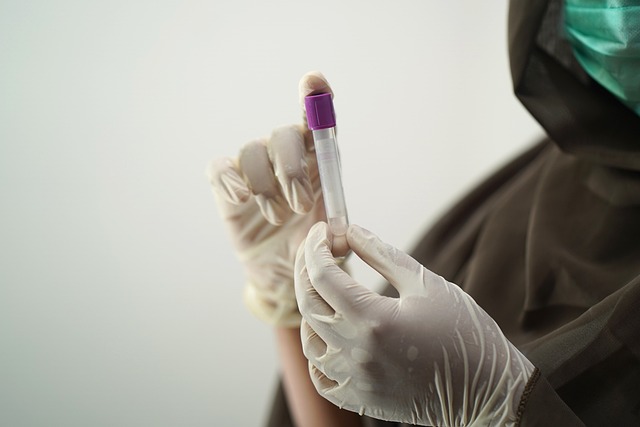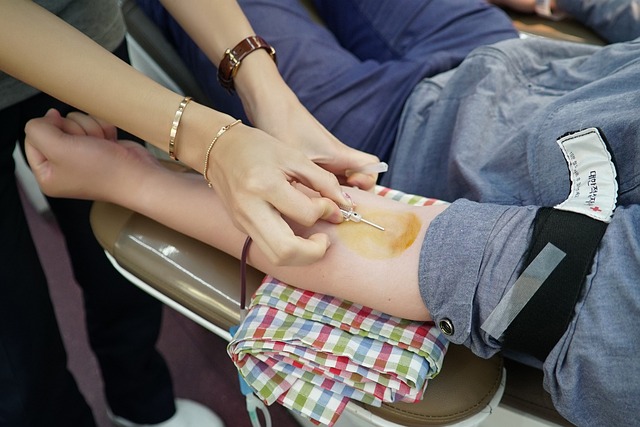UK residents should prioritize monitoring their vitamin D levels year-round due to the country's variable sunlight exposure. The UK Vitamin D Blood Test is an indispensable tool for accurately assessing one's vitamin D status by measuring levels in the blood, which are crucial for maintaining bone health, supporting immune function, and potentially reducing disease risk. Given the UK's climate, a home testing kit that involves a simple finger-prick blood sample can be a convenient and effective way to stay informed about your vitamin D levels. These kits allow individuals to send their samples to an accredited lab for analysis through a secure online portal. Adequate vitamin D levels, as defined by the NHS reference ranges of 50-125 nmol/L, are essential for calcium absorption and phosphorus balance. If results fall below this range, dietary changes such as incorporating oily fish into your diet or opting for fortified foods can be beneficial. For those with consistently low levels, healthcare professionals may recommend a tailored supplementation plan after sun exposure and considering skin health. It is always advisable to consult with a healthcare provider before starting any supplement regimen to ensure personalized care based on individual health needs. Regular testing and professional advice are key to maintaining optimal vitamin D levels and supporting overall well-being in the UK.
Maintaining one’s health at home is increasingly feasible, especially with advancements in self-monitoring wellness checks. A pivotal aspect of this is understanding and managing Vitamin D levels, particularly for UK residents. This article demystifies the importance of Vitamin D and guides you through conducting a self-test at home, interpreting your UK Vitamin D blood test results, and understanding the subsequent actions to ensure optimal health. Embrace the convenience of home wellness checks to keep track of this vital nutrient’s role in your wellbeing.
- Understanding the Importance of Vitamin D: A Guide for UK Residents
- How to Conduct a Vitamin D Self-Test: Step-by-Step Home Wellness Checks
- Interpreting Your UK Vitamin D Blood Test Results and Next Steps
Understanding the Importance of Vitamin D: A Guide for UK Residents

For UK residents, comprehending the significance of Vitamin D is crucial for maintaining optimal health. Vitamin D, often dubbed the ‘sunshine vitamin’, plays a pivotal role in bone health by facilitating calcium absorption and maintaining phosphorus levels within the body. It also contributes to immune function and has been associated with reducing the risk of certain diseases. The UK’s climate, characterised by less intense sun rays year-round due to its high latitude, means that many residents may not synthesise sufficient Vitamin D through sunlight exposure alone, particularly during winter months. This is where a UK Vitamin D blood test comes into play. It offers a precise measurement of an individual’s Vitamin D levels, enabling informed decisions regarding supplementation or dietary adjustments to achieve and maintain an optimal range. Regular testing, typically performed in the autumn or spring, can help prevent deficiencies that are common in the UK population, especially among older adults, those with darker skin, and individuals who spend minimal time outdoors. By understanding one’s Vitamin D status through a simple blood test, UK residents can proactively safeguard their health and wellbeing throughout the year.
How to Conduct a Vitamin D Self-Test: Step-by-Step Home Wellness Checks

Maintaining optimal vitamin D levels is crucial for overall health, and individuals in the UK can easily monitor their vitamin D status by conducting a self-test at home. The first step involves purchasing a vitamin D home test kit from a reputable supplier. These kits typically include a lancet for blood sampling, a blood collection device, detailed instructions, and a prepaid envelope for sending your sample to an accredited lab. Ensure you follow the provided guidelines precisely to obtain a reliable result. After cleaning the chosen area on your finger with the alcohol swab provided, use the lancet to obtain a small sample of blood. Carefully fill the collection device with a few drops of blood, as indicated by the markings. Once the required amount of blood is collected, seal the device according to the instructions and send it off using the included prepaid envelope.
After dispatching your blood sample, the next step is to wait for your results. Most home testing kits come with a secure online portal where you can access your results once they are available. These results will indicate whether your vitamin D levels fall within the normal range or if supplementation may be necessary. It’s advisable to consult with a healthcare professional to interpret your results and discuss any required dietary changes or supplement plans. Regularly conducting UK Vitamin D Blood Tests at home empowers individuals to take an active role in their health, ensuring they maintain adequate levels of this essential nutrient, particularly during the winter months when sunlight exposure is limited.
Interpreting Your UK Vitamin D Blood Test Results and Next Steps

Understanding your UK Vitamin D Blood Test results is a critical step in maintaining optimal health. Vitamin D, often dubbed the ‘sunshine vitamin,’ plays a pivotal role in calcium absorption and bone health. Upon receiving your test results, you’ll need to interpret them within the context of the reference ranges provided by the National Health Service (NHS). Typically, vitamin D levels are measured in nanomoles per litre (nmol/L), with a range generally considered sufficient for health being 50-125 nmol/L. A reading below this range may indicate a deficiency, potentially linked to symptoms such as fatigue or bone pain. Conversely, levels above 125 nmol/L are usually indicative of sufficient vitamin D stores.
If your UK Vitamin D Blood Test indicates a deficiency, the next steps involve dietary adjustments and possibly supplementation. Dietary sources of vitamin D include oily fish like salmon, mackerel, and sardines, as well as fortified foods such as milk and cereals. Sunlight exposure is another natural method to boost vitamin D levels; however, it’s essential to balance sun exposure with skin health and the prevention of sunburn. For those with persistently low levels, healthcare professionals may recommend a course of supplementation tailored to your specific needs. It’s advisable to consult with a healthcare provider before starting any supplement regimen, as they can provide personalized advice based on your overall health status and test results. They may also suggest follow-up tests after a few months to assess whether your vitamin D levels have improved, ensuring you’re on the path to wellness.
Regular wellness checks, such as those for Vitamin D, play a pivotal role in maintaining optimal health. For UK residents, understanding and monitoring Vitamin D levels through home blood tests can be both empowering and informative, aligning with the body’s needs and local sunlight conditions. The comprehensive guide on conducting a Vitamin D self-test and interpreting results ensures individuals can take charge of their wellbeing effectively. By embracing these home wellness checks, UK residents can proactively manage their health, leveraging the convenience and accessibility of UK Vitamin D Blood Tests. Staying informed about one’s vitamin levels is key to supporting a healthy lifestyle and preventing deficiency-related health issues.
